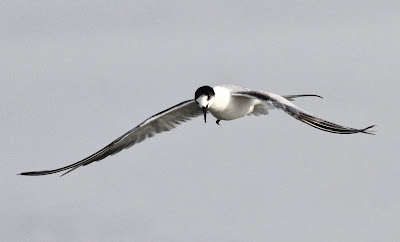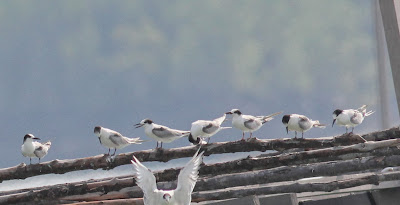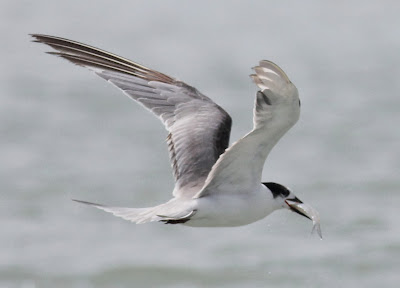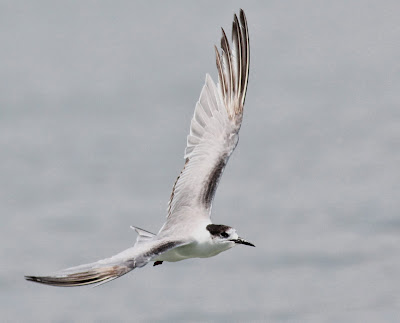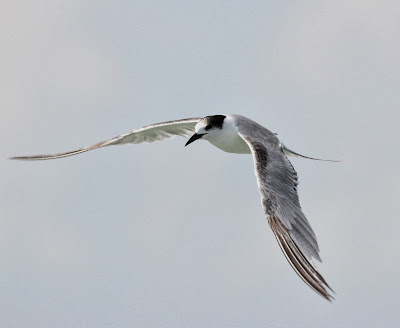This is a continuation from my earlier audacious attempt to show the photos of the four most commonly seen terns in Peninsular Malaysia. This time it will be "Whiskered Tern" (C.h hybridus). Said to be one of the largest marsh tern measuring approximately between 25 - 29 cm (10in - 12in). Also known as river terns in some books.
At a certain angle you may think that it could be a common tern. However the bill of a Whiskered Tern was reportedly to be a bit shorter and stubbier.
It has a black patch and a scally/streaked cap at its hind crown as compared to a common tern. Looks like it also has shorter and broader wings. Its body length also looks a fraction less than a common tern.
The bird above had just undergone molting - probably into its first winter plumage. This is the only tern i think which has black smudges on its body.
You can see that its tail is rather short and less forked as compared to the Common Terns.
Like all terns it would constantly look down to the waters for food. However it was reported that this tern does not do plunge diving but instead it would prefer to pick its food from the surface of the water.
Now you would know why this tern was also called a river tern. I have observed that there were other terns which would also "scout" for food along the river for example the white-winged and little terns. They however do not travel further up river as the whiskered terns. (more observations are required to confirm this statement).
Occasionally you do find them resting in the sea or on mudflats.
Here are more recent photos - Feb 2015 below:
IUCN status: "least concern" and its population was reported to be "stable" as of now.
Dive bombing for fish?
You can see the slightly notched tail and a greyish rump.
Here are more recent photos - Feb 2015 below:
Check out its 'balding' head like pattern in the above photos. A common feature of a Whiskered Tern.
IUCN status: "least concern" and its population was reported to be "stable" as of now.
Enjoy Watching Your Terns!






















